#rehabilitation
Text
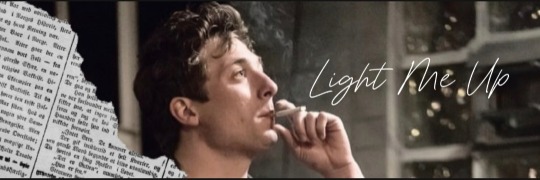
𝙋𝙝𝙞𝙡𝙞𝙥(𝙡𝙞𝙥) 𝙂𝙖𝙡𝙡𝙖𝙜𝙝𝙚𝙧 𝙭 𝙍𝙚𝙖𝙙𝙚𝙧
Synopsis: You attend your AA meetings at least once a week and you yourself know that you've always had your eyes on the Dirty blonde, maybe, this could be the day you could make something out of it.. Wouldn't you like to know?
Wc: 1.3k
Cw: alcohol, violence, drugs, angst, intoxication, aa meetings
A/n: my first oneshot, shameless too, enjoy lol
.・゜-: ✧ :.・゜-: ✧ .・゜-: ✧ .・゜-: ✧ :-.・゜-: ✧ :-
You've never seen him like this and thought you never would.
AA meetings were something you tried to attend at least once a week, and when you do successfully force yourself to leave your mess of an apartment that reeks of cigarettes, you can’t help but notice the blue-eyed dirty blonde that looks like he crawled out of his own grave and always sat at the back of the AA meetings. He always showed no emotion, his hands were always dug into the pockets of his worn-out jacket and his face was always blank. He's only stepped onto the podium of the AA meetings once to talk about his alcoholic laced stories but you know he was hiding something more intense, something deeper, and you can't help but want to claw your fingers down into his throat to find out. He talks while looking down and you recognize the shame intertwined into his voice as he speaks, an emotion you were very familiar with.
But that meeting happened weeks ago.
You're sat at one of the back rows of today's AA meeting. You're only looking up at the ceiling as the sob stories of the recovering alcoholics are only boring you to death rather than inspiring you to change into a “better person”. You stare at the flickering light bulb dreading for today’s meeting to end quick. You can't wait to light a new one and find your next fuck that's usually on the L that you take back to your apartment. It's only that you take interest into today’s meeting when you hear glass shattering. You whip your head to the left and see that soul dead man gripping harshly on the collar of a typical addict.
"What the fuck did you say?" You’ve never heard him raise his voice, he was always so quiet and reserved and he always speaks in a whisper.
"You Gallaghers are all white trash, don't know how the fuck your whore of a sister got out of jail, all you fucking Gallaghers deserve to rot at the clink" he's slurring his words, what kind of asshole comes into an AA meeting intoxicated? Your thoughts halt like a train when you see Blondie over there landing a hard hit onto the drunkies's jaw. He collapses on the floor and he’s coughing like a maniac as he's in between laughs, blood leaving his lips like Niagara Falls, you wince at the sight.
"Fucking kill me gallagher, forget you're being recorded by a camera?" The maniac shouts out in between his laughs. The recovering alcoholics are leaving one by one not wanting to be a part of this bloody dispute, and you're pretty sure one of them are calling the police, if not a drug dealer, this situation seems normal to relapse in your eyes.
His blue eyes whip to the corner of the room and he looks back at the drunkie with eyes that speak louder than the punch he landed that echoed around the room.
"You're a fucking lucky man, if I ever see you again...you are a fucking dead man"
He enunciates the last five words before spitting on the man's face and the drunkie still can't help but laugh.
Blondie digs into the pockets of his jacket again before leaving and you notice that he’s mumbling something to himself and yet despite the gruesome altercation that you just witnessed seconds ago, you feel drawn to just say something to him, to follow him. You follow your gut and follow his tracks on the way out of the building with your own hands dug deep into your jeans, but the pockets of a woman's jeans can only go so far. Your platform boots are thudding on the hard pavement as you exit the building where the meeting was held, you see him leaning on the wall to your left where the stained white paint of the building walls are only deteriorating.
You look at him and see a cigarette in between his lips as he mutters a quiet “fuck” that you can read from his occupied lips.
"Need a light?"
He looks at you for a second and doesn't reply to you, but instead leans his mouth towards your hand that's already raised up with a lighter attached to your fingers and you find yourself lighting his cigarette. It's only after the puff of smoke that exits his lips that he decides to talk.
"Thanks"
You both sit in the awkward yet comfortable silence as the lights of Chicago fill in the awkward atmosphere for you.
"Name?"
"Y/n"
"Philip, call me lip"
You nod your head before asking him the very obvious question that's been weighing the back of your head.
"What the fuck happened in there?"
Lip shrugs as another puff of smoke exits his lips before he looks at you to give you a brief explanation.
"drunkie Talked shit about my family, didn't know he was drunk until I punched him"
Silence took over the atmosphere again, the Chicago lights now struggling to save it.
"Why are you here?"
You've been dying to ask him that the moment you had laid your eyes on lip.
"None of your damn business is why I'm here"
He states with venom laced into each word and he says it quickly. You didn't say anything to anger him, you didn’t give out a remark to piss him off yet he's spoon feeding you a comment that makes you scoff and you're thinking about walking away. But you're entitled and egotistical ass won’t let you leave until you spew something nasty back.
"Well fuck you lip, just starting small talk cause I can't help but notice we're the only fucking loners in that shithole, guess you can't seem to pull your head out of your ass."
"I hope you enjoyed your cigarette lip"
You last managed to say as you enunciate his name, popping the p before walking away.
"My toddler of a brother got into my sisters fucking coke and he’s having seizures left and fucking right, I don’t know who the fuck bailed my bitch sister and I have no fucking idea how I’m going to pay for my brothers medical bills, you- you fucking happy?"
There's so much anger and hate in his words. But you're just so fucking egotistical that instead of walking away and feeling any sense of remorse, you turn around and see lip whose twisting his heel on the cigarette that you lit for him.
"Just because you gave me a light doesn't give your entitled ass the right to know shit about me"
You furrow your brows.
"I was only being nice-"
"Nice my fucking ass, you just want to get a fucking egotistical boost from the sob stories that you want out of me, is- is that it?"
Lip says unstable, your face is twisted and turned into confusion, not understanding how the fuck he's pulling words out of his ass.
"I don't know what the fuck I said to you to piss you off but-"
"Oh, go fuck yourself" he yells and he kicks the metal trash can near him, the clanging of the metal hitting the building wall and tearing the thin paint startles you and your heart starts fucking pounding.
And it all clicks.
His face is flushed red and sweating, his eyelids are drooping against his blood shot eyes and you see him stumbling after he kicked the trash can.
He's fucking drunk.
The two of you are looking at each other, panting. One in intoxication and the other in vexation.
You slowly back away while you're shaking your head ever so slowly. You can't help but think how fucking stupid you were for thinking that maybe you could have another chance at life with a random guy you found intriguing at an AA meeting- heck, wanting to pursue something of anything with a recovering alcoholic was already the first mistake. But now you're just standing there, wondering why the fuck you wanted to be a part of this shit in the first place.
"Go get some help lip."
_______________________________________________
Thank you for readingg!
#lip gallagher#shameless#fanfic#oneshot#alcoholism#rehabilitation#phillip gallagher#shameless us#please dont flop#first fic#alcoholics anonymous#lip gallagher x reader#x reader#cigarettes#angst#lip gallagher angst#lip gallagher imagines
24 notes
·
View notes
Text
free Palestine, but remember something
young chinese cambodian , says something important. If there is a true ceasefire, and the genocide against the gazan people ends, dont do that white people advocacy thing, and instantly stop paying attention to palestine. Rehabilitate please! After a genocide, the economy, education, the landscape is changed for so much worse. Notice how they bomb things like hospitals, schools, and universities? its to make recovering from this harder for gaza. Its happened before for people who've suffered from genocide, for once dont let it happen again. I hope that soon, gaza can escape literal hell, brought by israel
8K notes
·
View notes
Text
Nesta, Interrupted: gendered perceptions of alcoholism in ACOSF
CW: addiction, sexual assault, gendered violence.
Creds: I’m a licensed counselor with a degree specialization in treating addiction. I have career experience with multiple modes of mental health, trauma, and substance use treatment in women-specific carceral, institutional, and healthcare settings. And I know anyone can come on the internet and say that, but I pinky promise.
The short version:
ACOSF stigmatizes alcoholism in line with cultural standards.
Western culture feels differently about female and male alcoholics due to systemic sexism, and thus treats them differently.
Women’s experience of alcoholism is often compounded by or even a result of systemic factors and intersectional identity.
Nesta’s treatment in ACOSF, while repugnant, is in many ways very accurate of attitudes today.
(I’ll be using “women/men” and “male/female” to denote cis afab and amab people. Little research exists on the experiences of queer, nonbinary and gender expansive considerations in addiction and recovery, which is a fuckin’ shame. Studies are also largely conducted with white participants due to enormous barriers to treatment for Black, Indigenous, and people of color, so this convo is inherently incomplete where it neglects those intersections.)
Okay, first things first: ACOSF is a book that stigmatizes alcoholism. I will not be taking questions.
The number one thing to understand is that in America, land of Miss Sarah, we are very bad at addiction treatment (tx). Why? Because our culture hates addicts has as stigma around addiction. And female alcoholics bear a very specific set of stigmas based in their identity.
In Susanna Kaysen’s memoir Girl, Interrupted , Kaysen’s character is institutionalized following a non-fatal suicide attempt. When evaluated, she’s diagnosed with borderline personality disorder, that bastion of diagnoses perfect for people (75% of whom are female-identified) who don’t fit into our polite definition of functioning. As the book unfolds, she reflects on how (white) women are often pathologized when they buck against systems of oppression that create the dysfunction in them in the first place. That is not to say other women in the institution are not genuinely in need of help, nor that mental illness in women is always from a systemic wound. But it’s crucial in the treatment of female addiction and mental health disorders to considered the systemic factors of gendered violence and patriarchy, and the attitudes we hold about women who struggle with drinking.
Think about female alcoholics in media. If she’s young, she’s a loose, reckless sl*t looking for trouble and deserving of the reality check when she finds it (Amy Schumer in Trainwreck, Lindsay Lohan in general). Or if the woman are older, they are discarded, or gross, or pathetic, or evil like anyone Faye Dunaway played or Eminem’s mom in 8 Mile (deep cut lol). Men are afforded a much larger spectrum of experiences and struggles - Ernest Hemingway, Leaving Las Vegas, Sideways, the dude from A Star is Born, Frank from Shameless (brilliant), frat boys, blue collar workers, introspective tortured artists, fucking IRON MAN. I could go on forever, but I hope that illustrates the depth and diversity of male-centric stories of alcoholism not often afforded to women.
One of the most empathetic and accurate portrayals of female alcoholism, in my opinion, is in the show Sharp Objects (the book, too, but actually witnessing it makes a difference). We see Amy Adams’ Camille swig vodka from an Evian bottle while fending off vicious, veiled attacks from her verbally and emotionally abusive mother and experiencing flashbacks of teenage sexual assault. We watch her struggle to find emotional safety in her conservative hometown, both wanting to fit in and get out in order to survive. We GET why she drinks and I have trouble blaming her for it even as she wreaks havoc on herself and others. We can see her clawing just to make it out alive, and alcohol is the tool she’s using to do it, for better or worse.
Which is where Nesta enters the chat. When we get our first glimpse of her alcohol use is ACOFAS, it’s portrayed as something everyone knows about but that she’s still mostly keeping it together - her dress is clean, her hair is neatly braided, she doesn’t need a chaperone to show up to a family event. The deterioration between ACOFAS and ACOSF is alarming, and we know that alcoholism is a progressive condition so that tends to happen. Was there a particular trigger? That’s hard to say. Solstice certainly didn’t help, especially with the pressures to perform and conform to the standards of the Inner Circle aka the people in power. I imagine seeing her sisters bouncey and reveling in the world that stole them and killed their father was probably.. tough, to say the least. The barge party seems to be a turning point as well, though this one is more confusing to me. But given the child abuse, extreme poverty, sexual assault, kidnapping, bodily violation, witnessing her father’s murder, almost dying, WAR - and that’s not even to mention essentially becoming a refugee - it would be amazing if she DIDN’T drink. She 100% has complex trauma, and is looking for ways to cope.
No one with full capacity dreams of becoming an addict when they grow up. Addiction, in my professional and personal experience, is largely a strategy for coping with a deeper wound. People don’t drink to feel bad. They drink to feel good, and to survive. Nesta herself is drinking to survive, but it’s having the unfortunate side effect of killing her at the same time. As she slides into active addiction, the thought of her own death may even be comforting, and alcohol in that way is her friend. (There's some interesting research right now framing addiction as an attachment disorder, but I don't know enough to speak on it much.)
So she obviously needs help. That’s not a debate. What is a debate is how the IC should best go about intervening. A variation on the Johnson method is used in ACOSF (the one from the show Intervention) and appears to be successful only because they threaten her if she doesn’t comply. This method has mixed data to support it, and while it’s very good at getting people into tx, there is a higher relapse rate for those who receive it (1). The “family” gathers and tells her the ways she’s hurt them and tell her the consequences if she doesn’t seek the help they’re offering. And again, so many of their reason are the effects on THEM, how she’s making THEM look, not her pain.
The IC’s ignorance and dismissal of her alcoholism in ACOSF is frankly mystifying. Why do they intervene on all the drinking and sexing, anyway? It seems like they’ve been fine enough with it up to this point. But now it's gone too far, not because of her illness but because she is embarrassing them. And I don’t know about you, but between Cassian apparently fucking half of Velaris and Mor’s heavily documented emotional drinking, that’s hard to square. It makes it feel much more likely that they don’t like the way she is coping, that she is not fitting into their picture of who she’s supposed to be. This picture is inherently gendered, because Prythian society and those who live in it have explicit and implicit expectations of gender roles, whether they’ll admit it or not. Cassian and Mor are playing their roles well; Nesta is not.
That leads me to believe it is NOT all about her, but the systemic and internal factors influencing their perception of her and the ways she’s struggling. It’s distasteful to them for her, a female, to be deteriorating this publicly, despite the fact that her very identity makes it harder for her to function in the patriarchy of Prythian. We hear almost exclusively about sexual violence against women, aside from 2 male characters. Past or present assault of women is a major plot point on multiple occasions (Mor, Gwyn, Nesta, Emerie, Rhysands mom and sister, the lady of autumn, Cassians mom, Azriels mom, I could go on). But something about the way Nesta is contending with that is unacceptable, and I believe it’s because she’s not trying to cover up her dysfunction. In prythian, we keep these things hidden- Mor’s assault is never processed in full, Azriel’s mom seems to be alone at Rosehall, priestesses are literally hidden inside a mountain for centuries. Women process trauma alone and in the dark, but Nesta is in the light and she is loud. She is refusing to hide her problems, and the IC don’t like that, whether they realize it or not.
So why don’t the IC understand this? Like I said earlier, as a culture we hate addicts, or what they stand for, in very much the same way I think we hate people experiencing homelessness. We convince ourselves it was a series of bad choices that led someone where they are, choices we would never make because we are smart, smarter than them. We believe are more in control than that. We can prevent bad things from happening to us because we are good, because we are better than whoever it’s happening to. But the reality is almost ALL of us are one hospital stay away from homelessness, just as all of us are one trauma away from addiction. And with female addicts, we have another layer of expecting women to only struggle nicely and quietly, or to go away. Intersectional factors are at play here, too: white women are much more likely to have alcoholism attributed to mental health and trauma factors, where people of color often suffer the same addiction being more associated with crime. You can imagine how that plays out differently.
So what is the effect of all this? Gendered expectations lead to not only external stigma around addiction and tx, but also to internalized stigma which can limit willingness to seek tx. (2) Many social forces encourage women to drink and discourage them from telling anyone. Factors such as poverty, family planning, access to education, racial discrimination, and location can make services harder to access. Internally, women are more likely to enter treatment with less confidence in their ability to succeed, but report more strengths and more potential to grow recovery strengths during and following tx. For men, the pattern is reversed (3). And women have more successful tx episodes overall when gendered considerations are a part of the design and implementation of services (4). For Nesta, the effect is that she’s forced into treatment and copes by having hate sex with her ex and changing herself to conform to her family’s expectations while the House and the Valkyrie’s actually take care of her. I do not see how Sarah drew the line from there to recovery, I truly don’t. If anything, she recovers in spite of the ICs intervention, not because of it.
In summary, Nesta Archeron deserved better. Nesta deserved the same compassion the book gives to men who are struggling, and it’s a reflection of not just the book’s culture but the author’s culture that she doesn’t get it. Female alcoholics are worthy of treatment that integrates their identities, as those identities are often essential factors contributing to their addiction. What's shown in ACOSF is a reality many women live, and they shouldn't have to.
Barry Loneck, James A. Garrett & Steven M Banks (1996) The Johnson Intervention and Relapse During Outpatient Treatment, The American Journal of Drug and Alcohol Abuse, 22:3, 363-375, DOI: 10.3109/00952999609001665
Groshkova T, Best D, White W. The Assessment of Recovery Capital: Properties and psychometrics of a measure of addiction recovery strengths. Drug Alcohol Rev. 2013;32(2):187–94.
Best D, Vanderplasschen W, Nisic M. Measuring capital in active addiction and recovery: the development of the strengths and barriers recovery scale (SABRS). Subst Abuse Treat, Prev Policy. 2020;15(1):1–8.
Polak, K., Haug, N.A., Drachenberg, H.E. et al. Gender Considerations in Addiction: Implications for Treatment. Curr Treat Options Psych 2, 326–338 (2015). https://doi.org/10.1007/s40501-015-0054-5
#nesta archeron#pro nesta#alcoholism#mental health#sexism#acotar#acosf#stigma#rehabilitation#prythian university#sjm critical
122 notes
·
View notes
Text
My secret hot take that I harshly judge anyone who disagrees with is that I think literally anyone can be reformed and that punitive justice, while satisfying, is not effective or humane.
I want a massive prison reform not just because of the racism but because of the horrible cruelty of expecting people to stop doing something when you hit them hard enough. Even when it works (which it usually doesn't for various reasons), you cause more harm than good.
676 notes
·
View notes
Text
youtube
How the UN is Holding Back the Sahara Desert
Permaculture instructor Andrew Millison journeys with the UN World Food Programme to the Northern border of Senegal to see an innovative land recovery project within the Great Green Wall of Africa that is harvesting rainwater, increasing food security, and rehabilitating the ecosystem.
#solarpunk#senegal#niger#permaculture#great green wall#africa#landscape#rehabilitation#Great Green Wall of Africa#rainwater harvesting#Youtube
128 notes
·
View notes
Text
shoutout to recovering abusers, especially those who are abuse/trauma survivors themselves. you and i both know that, unfortunately, once we do something, we can't take it back. i know it hurts to know that, but recognizing it for what it is... that's what allows you to do the only thing left to do - be better. it's not easy, nor pleasant, and likely, a very isolating experience.
so i want you to know, there's at least one person out there who's rooting for you, who's proud of the person you're becoming. you are not doomed to do horrible things forever. you are not beyond leading a happier, healthier life. growth is an option. healthy relationships are an option. they have to be, for all our sakes.
if you want to stop hurting others, and stop hurting yourself, your choice is right here. i believe in you. you can do it. you have to. break the chain.
#softspoonie#abusers#abuse#recovering abuser#recovering abusers#abuse survivor#trauma#trauma survivor#mental health#mental health support#abusive relationships#abusive relationship#abusive#rehabilitative justice#rehabilitation#recovery#growth#healing#personal growth#positivity#mental health positivity
155 notes
·
View notes
Text

Every time one of the band members says they "just found out" something, guaranteed there was a(n unscheduled) meeting in Charles' office about it. The entire premise of "Rehabklok" even implies that the boys collectively become 'experts' on AA in order to ship Pickles off to rehab.
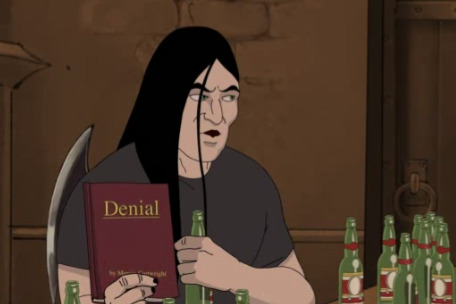
#rehabilitation#alcoholics anonymous#dethklok#metalocalypse#pickles the drummer#booze#alcohol#beer#nathan explosion#skwisgaar skwigelf#william murderface#charles foster offdensen#cfo#adult swim#toki wartooth#brendan small#season 3
85 notes
·
View notes
Text

Musée La Piscine, Roubaix/Lille
#Musée La Piscine#piscineroubaix#musee#art#sculpture#rehabilitation#visualzen#lille#hautsdefrance#photography#kiel#original photographers#photographers on tumblr
47 notes
·
View notes
Text
In life, I believe we are all just addicts struggling with our drug of choice.
For some, it may be actual drugs. Meth, cocaine, heroine, marijuana... whatever suits them. For others it is alcohol or cigarettes or other tobacco products.
It may be pornography. Or self harm.
I have wrestled with my drug of choice for about four years. Indulging daily or weekly. I'm accustomed to counting wins by the day.
...
Tomorrow, I'm going out with some friends to celebrate two months clean. Eventually I may relapse back into my old habits, but that's not the point. The point is proving to myself that I am able. Recovery is possible.
I WILL NOT BE A SLAVE TO MY DRUG.
And I'll encourage you to adopt the same mantra. These addictions and this society that fuels them? It can't hold us. We are free.
#alternative#tw drugs#rehab#rehabilitation#addiction#self harm#sh#suicidal#depression#anxiety#mentally ill#mental health awareness#actually mentally ill#ak thoughts#ak rants#mental illness#recovery#we will recover#encouragment#encouraging words#life update#clean#self control#addict#recover#deep shiz#deep thoughts#deep#anti capitalist#anarchist
70 notes
·
View notes
Text
‘Books keep our minds free’: US prisons ban reading materials at alarming pace
New PEN America data reveals incarcerated persons are being robbed of magazines and even recipe books
by Olivia Empson

Reading bans are rising at an alarming rate in prisons across the country, with new PEN America data revealing that those incarcerated are being robbed of the occasional magazine and even recipe books on how to make ramen.
For almost 22 years, Zeke Caligiuri subscribed to the New Yorker magazine from prison in Minnesota. He was meant to receive 52 annual issues but claimed during his sentencing to have never gotten the full amount. Instead, a non-delivery notice with vague wording would arrive at the prison post room, sometimes flagging an advertisement that was deemed inappropriate or just one article in an issue of many. After searching for information about what he couldn’t read, Caligiuri would sink into a period of overwhelming defeat.
“I realized that my world needed to get bigger,” he said. “But the things I needed to see and know were being held back.”
During this time, the words of New Yorker writers like Adam Gopnik, Ariel Levy and Emily Nussbaum were means of escaping the monotony of incarceration. Prison was programmed by a rigorous schedule, with days hardly extending beyond what was for lunch or when inmates could watch television. Searching for meaning, Caligiuri sometimes slept on the bunks with a book next to his head. When he could get it, poetry was the first thing he read when he woke up.
“If you take the books and culture out of these places, you have a zoo,” he said. “Language is the building block of creation. For me, in prison, it was the biggest thing. Words were the only thing connecting me with the world, with my family, and with my community.”
READ MORE
59 notes
·
View notes
Text
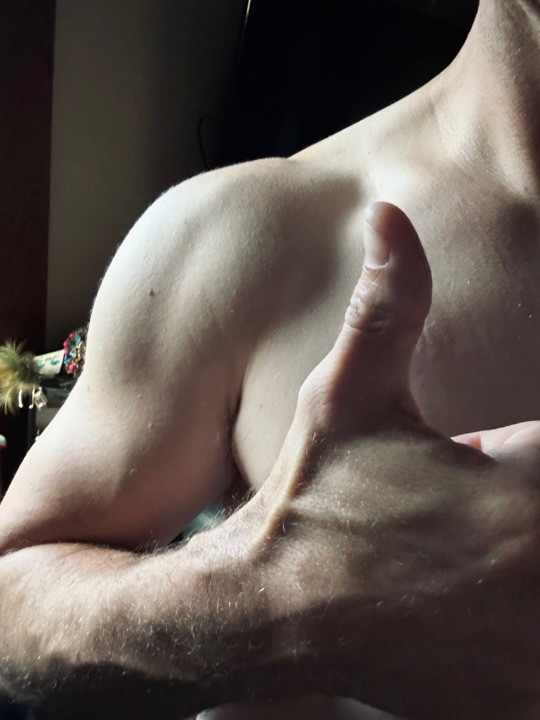
Great news today!! No more physical therapy appointments for this guy! Dr has cleared me to finish out my rehab from home. Shoulder is feeling really good and I’ve gained full mobility and range of motion lifting from my side outward and about 95% raising my arm forward. Still a little more to gain reaching behind my back but overall greatly improved.
My therapist was also impressed how much strength I’ve already gained back in all push and pull motions that incorporate my shoulder. I was warned not to push it and take it easy on overhead pressing or pulling motions. But overall cleared to start easing into some heavier weight training again so long as there is no pain or discomfort. Man it feels like it’s taken forever to get to this point but it feels so good to finally feel like I can start to function normally again. Cheer’s to getting over the hump!
#recovery#rehabilitation#shoulder injury#road to recovery#mental toughness#progress#me#m0tiv8me#fitblr#fitness#fitspo#humpday#weightlifting#exercise#physical therapy
74 notes
·
View notes
Text
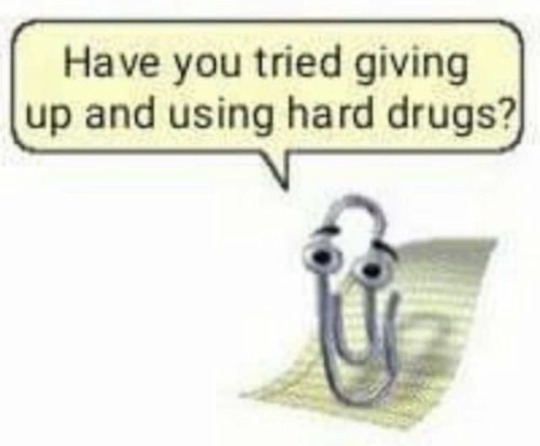
#drug aesthetic#aesthetic#mentally tired#mentally fucked#depressing quotes#mentally exhausted#drugs aesthetic#iv drugs#edgy theme#mentally unwell#oxycontin 80mg#addiction#i need heeeeelp#drug rehab#rehabilitation#drug blog#please help#giving up#i am suffering#i am unstable#i am unwell
31 notes
·
View notes
Text
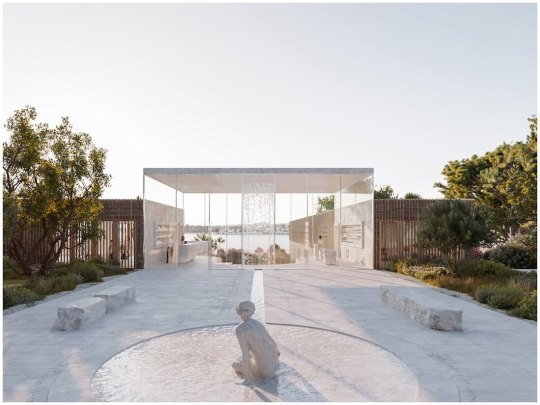






O'Balia thermal Spa, Balaruc-les-Bains, France,
(Demolition, rehabilitation, and extension)
Architecture firm: Amelia Tavella
#art#design#architecture#travels#interior design#luxury lifestyle#interiors#spa#welness#o'balia#thermal#france#spa concept#render#balaruc-les-bains#renovation#rehabilitation#amelia tavella
22 notes
·
View notes
Text
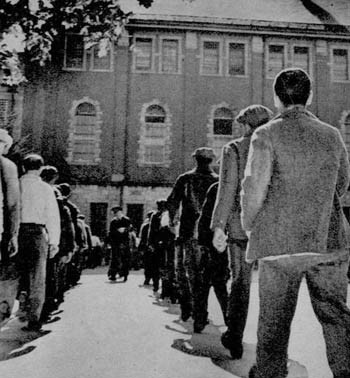
"The Progressives’ design for the penitentiary did alter the system of incarceration. Their ideas on normalization, classification, education, labor, and discipline had an important effect upon prison administration. But in this field, perhaps above all others, innovation must not be confused with reform. Once again, rhetoric and reality diverged substantially. Progressive programs were adopted more readily in some states than in others, more often in industrialized and urban areas, less often in southern, border, and mountain regions. Nowhere, however, were they adopted consistently. One finds a part of the program in one prison, another part in a second or in a third. Change was piecemeal, not consistent, and procedures were almost nowhere implemented to the degree that reformers wished. One should think not of a Progressive prison, but of prisons with more or less Progressive features.
The change that would have first struck a visitor to a twentieth-century institution who was familiar with traditional practices, was the new style of prisoners’ dress. The day of the stripes passed, outlandish designs gave way to more ordinary dress. It was a small shift, but officials enthusiastically linked it to a new orientation for incarceration. In 1896 the warden of Illinois’s Joliet prison commented that inmates “should be treated in a manner that would tend to cultivate in them, spirit of self-respect, manhood and self-denial. . . , We are certainly making rapid headway, as is shown by the recently adopted Parole Law and the abolishment of prison stripes.” In 1906, the directors of the New Hampshire prison, eager to follow the dictates of the “science of criminology” and “the laws of modern prisons,” complained that “the old unsightly black and red convict suit is still used. . . . This prison garb is degrading to the prisoner and in modern prisons is no longer worn.” The uniform should be grey: “Modern prisons have almost without exception adopted this color.” The next year they proudly announced that the legislature had approved an appropriation of $700 to cover the costs of the turnover. By the mid-1930’s the Attorney General’s survey of prison conditions reported that only four states (all southern) still used striped uniforms. The rest had abandoned “the ridiculous costumes of earlier days.”
To the same ends, most penitentiaries abolished the lock step and the rules of silence. Sing-Sing, which had invented that curious shuffle, substituted a simple march. Pennsylvania’s Eastern State Penitentiary, world famous for creating and enforcing the silent system, now allowed prisoners to talk in dining rooms, in shops, and in the yard. Odd variations on these practices also ended. “It had been the custom for years,” noted the New Hampshire prison directors, “not to allow prisoners to look in any direction except downward,” so that “when a man is released from prison he will carry with him as a result of this rule a furtive and hang-dog expression.” In keeping with the new ethos, they abolished the regulation.
Concomitantly, prisons allowed inmates “freedom of the yard,” to mingle, converse, and exercise for an hour or two daily. Some institutions built baseball fields and basketbaIl courts and organized prison teams. “An important phase in the care of the prisoner,” declared the warden of California’s Folsom prison, “is the provisions made for proper recreation. Without something to look forward to, the men would become disheartened. . . . Baseball is the chief means of recreation and it is extremely popular.” The new premium on exercise and recreation was the penitentiary’s counterpart to the Progressive playground movement and settlement house athletic clubs.
This same orientation led prisons to introduce movies. Sing Sing showed films two nights a week, others settled for once a week, and the warden or the chaplain usually made the choice. Folsom’s warden, for example, like to keep them light: “Good wholesome comedy with its laugh provoking qualities seems to be the most beneficial.” Radio soon appeared as well. The prisons generally established a central system, providing inmates with earphones in their cells to listen to the programs that the administration selected. The Virginia State Penitentiary allowed inmates to use their own sets, with the result that, as a visitor remarked “the institution looks like a large cob-web with hundreds of antennas, leads and groundwires strung about the roofs and around the cell block.”
Given a commitment to sociability, prisons liberalized rules of correspondence and visits. Sing-Sing placed no restrictions on the number of letters, San Quentin allowed one a day, the New Jersey penitentiary at Trenton permitted six a month. Visitors could now come to most prisons twice a month and some institutions, like Sing-Sing, allowed visits five times a month. Newspapers and magazines also enjoyed freer circulation. As New Hampshire’s warden observed in 1916: “The new privileges include newspapers, that the men may keep up with the events of the day, more frequent writing of letters and receiving of letters from friends, more frequent visits from relatives . . . all of which tend to contentment and the reestablishment of self-respect.’? All of this would make the prisoners’ “life as nearly normal as circumstances will permit, so that when they are finally given their liberty they will not have so great a gap to bridge between the life they have led here . . . and the life that we hope they are to lead.”
These innovations may well have eased the burden of incarceration. Under conditions of total deprivation of liberty, amenities are not to be taken lightly. But whether they could normalize the prison environment and breed self-respect among inmates is quite another matter. For all these changes, the prison community remained abnormal. Inmates simply did not look like civilians; no one would mistake a group of convicts for a gathering of ordinary citizens. The baggy grey pants and the formless grey jacket, each item marked prominently with a stenciled identification number, became the typical prison garb. And the fact that many prisons allowed the purchase of bits of clothing, such as a sweater or more commonly a cap, hardly gave inmates a better appearance. The new dress substituted one kind of uniform for another. Stripes gave way to numbers.
So too, prisoners undoubtedly welcomed the right to march or walk as opposed to shuffle, and the right to talk to each other without fear of penalty. But freedom of the yard was limited to an hour or two a day and it was usually spent in “aimless milling about.” Recreational facilities were generally primitive, and organized athletic programs included only a handful of men. More disturbing, prisoners still spent the bulk of non-working time in their cells. Even liberal prisons locked their men in by 5:30 in the afternoon and kept them shut up until the next morning. Administrators continued to censor mail, reading materials, movies, and radio programs; their favorite prohibitions involved all matter dealing with sex or communism. Inmates preferred eating together to eating alone in a cell. But wardens, concerned about the possibility of riots with so many inmates congregated together, often added a catwalk above the mess hall and put armed guards on patrol.
Prisoners may well have welcomed liberalized visiting regulations, but the encounters took place under trying conditions. Some prisons permitted an initial embrace, more prohibited all physical contact. The rooms were dingy and gloomy. Most institutions had the prisoner and his visitor talk across a table, generally separated by a glass or wire mesh. The more security-minded went to greater pains. At Trenton, for example, bullet-proof glass divided inmate from visitor; they talked through a perforated metal opening in the glass. Almost everywhere guards sat at the ends of the tables and conversations had to be carried on in a normal voice; anyone caught whispering would be returned to his cell. The whole experience was undoubtedly more frustrating than satisfying.
The one reform that might have fundamentally altered the internal organization of the prison, Osborne’s Mutual Welfare League, was not implemented to any degree at all. The League persisted for a few years at Sing-Sing, but a riot in 1929 gave guards and other critics the occasion to eliminate it. One couId argue that inmate self-rule under Osborne was little more than a skillful exercise in manipulation, allowing Osborne to cloak his own authority in a more benevolent guise. It is unnecessary, however, to dwell on so fine a point. Wardens were simply not prepared to give over any degree of power to inmates. After all, how could men who had already abused their freedom on the outside be trusted to exercise it on the inside? Administrators also feared, not unreasonably, that inmate rule would empower inmate gangs to abuse fellow prisoners. In brief, the concept of a Mutual Welfare League made little impact on prison systems throughout this period.
If prisons could not approximate a normal community, they fared no better in attempting to approximate a therapeutic community. Again, reform programs frequently did alter inherited practices but they inevitably fell far short of fulfilling expectations. Prisons did not warrant the label of hospital or school.
Starting in the 1910’s and even more commonly through the 1920's, state penitentiaries established a period of isolation and classification for entering inmates. New prisoners were confined to a separate building or cell block (or occasionally, to one institution in a complex of state institutions); they remained there for a two- to four-week period, took tests and underwent interviews, and then were placed in the general prison population. In the Attorney General’s Survey of Release Procedures: Prisons forty-five institutions in a sample of sixty followed such practices. Eastern State Penitentiary, for example, isolated newcomers for thirty days under the supervision of a classification committee made up of two deputy wardens, the parole officer, a physician, a psychiatrist, a psychologist, the educational director, the social service director, and two chaplains. The federal government’s new prison at Lewisburg, Pennsylvania, opened in 1932 and, eager to employ the most modern principles, also followed this routine. All new prisoners were on “quarantine status,” and over the course of a month each received a medical examination, psychometric tests to measure his intelligence, and an interview with the Supervisor of Education. The Supervisor then decided on a program, subject to the approval of its Classification Board. All of this was to insure “that an integrated program . . . may lead to the most effective adjustment, both within the Institution and after discharge.”
It was within the framework of these procedures that psychiatrists and psychologists took up posts inside the prisons for the first time. The change can be dated precisely. By 1926, sixty-seven institutions employed psychiatrists: thirty-five of them made their appointments between 1920 and 1926. Of forty-five institutions having psychologists, twenty-seven hired them between 1920 and 1926. The innovation was quite popular among prison officials. “The only rational method of caring for prisoners,” one Connecticut administrator declared, “is by classifying and treating them according to scientific knowledge . . . [that] can only be obtained by the employment of the psychologist, the psychiatrist, and the physician.” In fact, one New York official believed it “very unfair to the inmate as well as to the institution to try and manage an institution of this type without the aid of a psychiatrist.”
Over this same period several states also implemented greater institutional specialization. Most noteworthy was their frequent isolation of the criminal insane from the general population. In 1904, only five states maintained prisons for the criminally insane; by 1930, twenty-four did. At the same time, reformatories for young first offenders, those between the ages of sixteen and twenty-five or sixteen and thirty, became increasingly popular. In 1904, eleven states operated such facilities; in 1930, eighteen did. Several states which constructed new prisons between 1900 and 1935 attempted to give each facility a specific assignment. No state pursued this policy more diligently than New York. It added Great Meadow (Comstock), and Attica to its chain of institutions, the first two to service minor offenders, the latter, for the toughest cases. New York‘s only rival was Pennsylvania. By the early 1930’s it ran a prison farm on a minimum security basis; it had a new Eastern State Penitentiary at Grateford and the older Western State Penitentiary at Pittsburgh for medium security; and it made the parent of all prisons, the Eastern State Penitentiary at Philadelphia, the maximum security institution. Some states with two penitentiaries which traditionally had served different geographic regions, now tried to distinguish them by class of criminals. In California, for instance, San Quentin was to hold the more hopeful cases, Folsom the hard core.
But invariably, these would-be therapeutic innovations had little effect on prison routines. They never managed to penetrate the system in any depth. Only a distinct minority of institutions attempted to implement such programs and even their efforts produced thin results. Change never moved beyond the superficial."
- David J. Rothman, Conscience and Convenience: The Asylum and Its Alternatives in Progressive America. Revised Edition. New York: Aldine de Gruyter, 2002 (1980), p. 128-134
#penal reform#progressive penology#progressive politics#rehabilitation#penal modernism#american prison system#penology#prison sports#prison community#prison discipline#convict uniforms#prison routine#classification and segregation#history of crime and punishment#mutual welfare league#utopia of classification#academic quote#reading 2023#david rothman
26 notes
·
View notes
Text
Whump Prompt #1301
Submitted by Anon - thanks!
So I’ve just been thinking of whumpees who can’t do anything for themselves anymore. They have to be told. And once they’re rescued, one of their former friends/coworkers/team members/etc sticks with them. The others think their hopeless, but one person is always there, trying to help and rehabilitate them.
49 notes
·
View notes
Text
Hey Tumblr fam,
I hope this post finds you well. I'm reaching out to share a personal journey that I'm embarking on and to ask for your support in making it possible.
As many of you may know, the Gaza Strip is currently facing heightened conflicts with Israel, and the situation has made it increasingly unsafe for many of us living here. Amidst this turmoil, I've made the difficult decision to seek safety elsewhere, and my destination is Egypt.
However, the journey from Gaza to Egypt is not an easy one, especially given the current circumstances. Travel costs, for me and my family, are significant hurdles to overcome. That's why I've set up a GoFundMe page to help cover these expenses.
Before the conflict escalated, I worked as a rehabilitation engineer and assistive technologies specialist, dedicating my time and skills to helping persons with disabilities. It was more than just a job; it was my passion. Now, I find myself in a situation where I need assistance, and I'm turning to my community for support.
Your donation, no matter how small, can make a world of difference in ensuring my safety and well-being. EVERY EURO COUNTS.
Here's the link to my GoFundMe page where you can donate and read more about my story: https://www.gofundme.com/f/escaping-conflict-a-journey-towards-hope-and-rene
If you're unable to contribute financially, that's okay too! Simply sharing this post with your network can help spread the word and reach more people who may be able to help.
Thank you from the bottom of my heart for taking the time to read this and for considering supporting me on this journey to safety. Your kindness and generosity mean more to me than words can express.
Stay safe and take care,
Islam.
#gofundme#Gaza#gaza strip#gaza genocide#gazaunderattack#ceasefire#supp#donate#donate if you can#please donate#donations#go fund me#war#war crimes#war on gaza#assistive#assistive technology#rehabilitation#assistive device#stop war#free#free palestine#eme#emergency#help#please help#support#fundraising#financial assistance#safe
14 notes
·
View notes